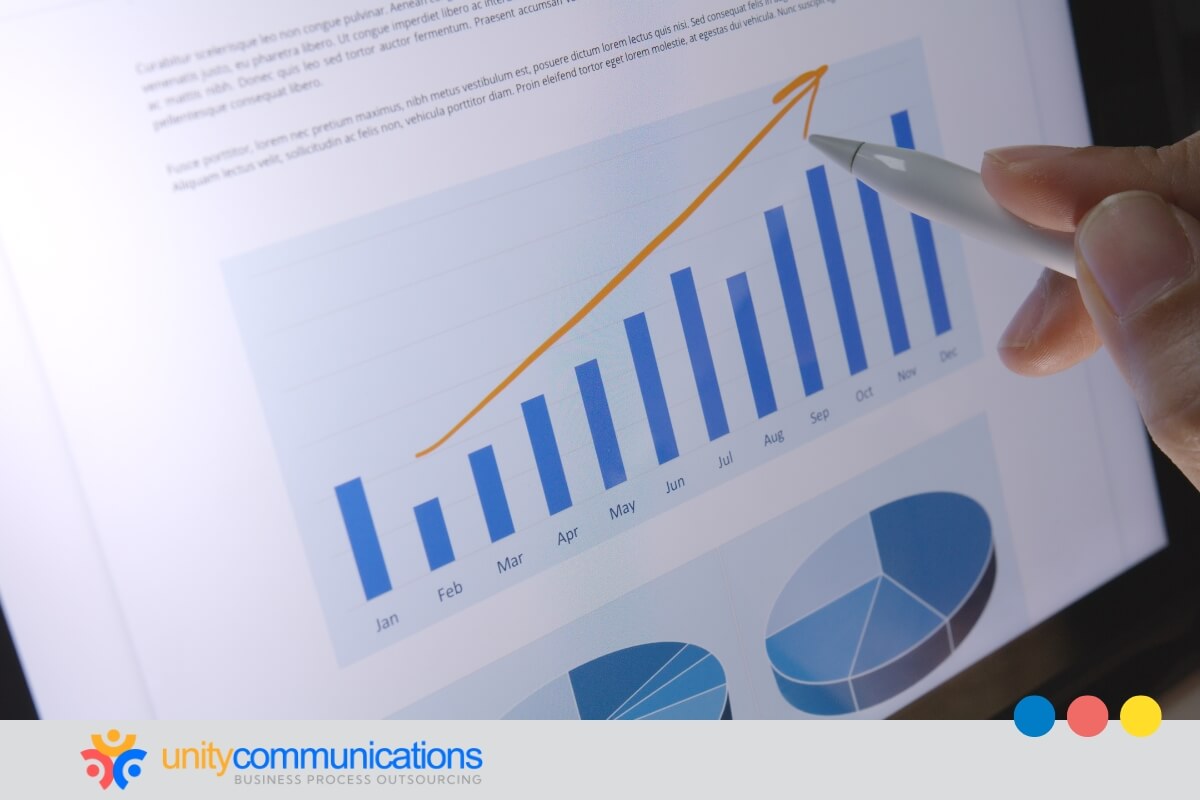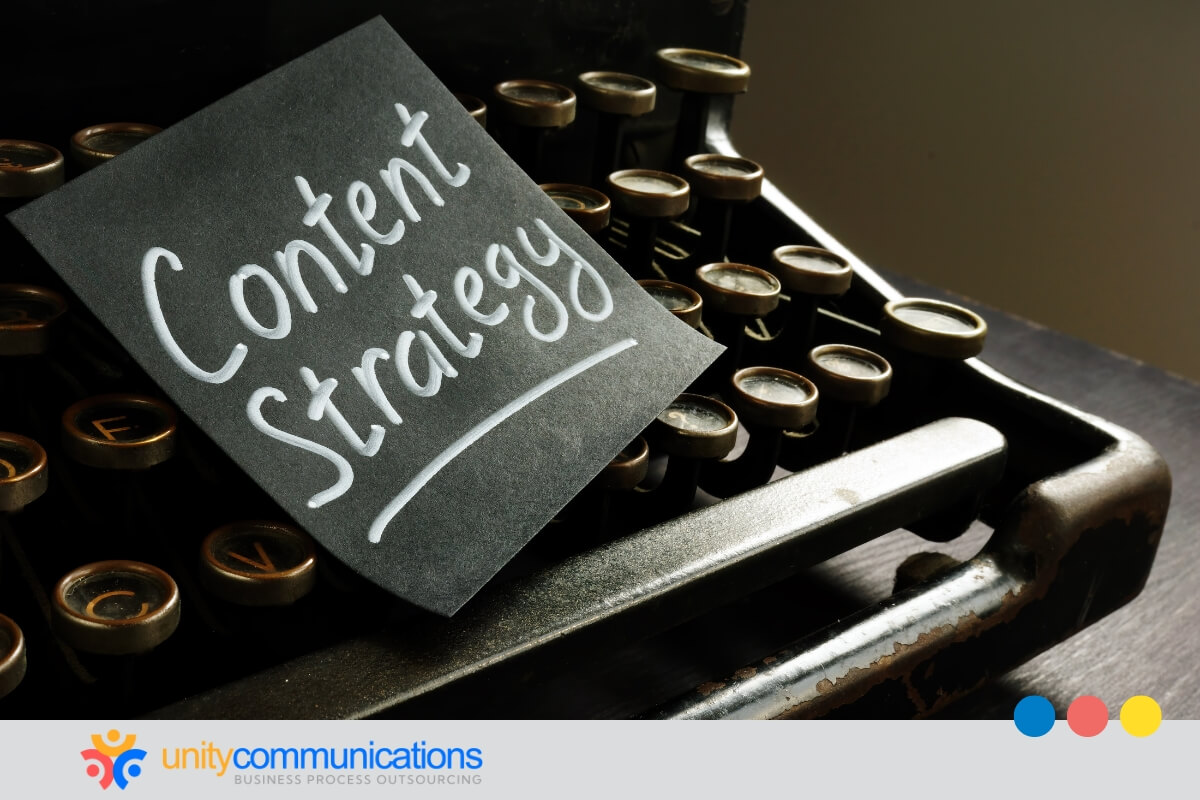Table of Contents
As a small business investing in social media, you must know whether your campaigns drive results. Tracking social media marketing key performance indicators (KPIs) can provide insights that inform decisions and refine tactics.
Whether you manage your strategy internally or use social media marketing services, data-driven decisions maximize your return and sustain online growth and visibility.
This article explores the most impactful social media metrics for small businesses, how to set actionable goals, and the best tools and tactics for using raw data to grow your business. Let’s dive in.
Why social media analytics matter for small business growth

According to recent research, 65% of consumers feel more connected to brands with a robust social media presence. This connection can influence trust, loyalty, and purchasing decisions, making it critical for small businesses to show up consistently on Facebook, Instagram, and LinkedIn.
But when every marketing dollar counts, how do you know if your efforts are paying off? That’s where social media analytics come in. It helps you see what’s working, what to improve, and where to focus your time and budget effectively. Beyond tracking performance, it guides strategic, data-driven decisions that fuel growth.
When you understand how your audience interacts with your brand online, you can quickly adapt content, respond to trends, and spot new opportunities. If you’re working with business process outsourcing (BPO) partners, sharing these insights aligns everyone to keep your messaging consistent and resources optimized.
6 essential social media KPIs to track
Not all metrics are created equal. As a small business owner, you should prioritize social media marketing KPIs that align with your goals to use resources efficiently and make more accurate decisions.
Ready to see social media analytics in action? These examples highlight how data-driven insights can transform everyday marketing into business growth. Apply them to sharpen your strategy today.
1. Engagement rate
The engagement rate shows how actively your audience interacts with posts through likes, shares, comments, and saves. As one of the popular social media marketing KPIs, it gauges the content’s relevance to your followers.
A high engagement rate indicates that the posts resonate with the audience, increasing brand awareness and visibility. It also validates your creative direction and influences future campaigns.
2. Reach and impressions
Reach measures how many unique users saw your content, while impressions count total views (including repeat ones). Both social media marketing KPIs emphasize how far your content spreads and whether your awareness efforts are gaining traction.
3. Click-through rate (CTR)
CTR shows how many users clicked a link or call to action in your post, ad, or profile. It reveals how effective your messaging is in driving interest to action.
Among the more actionable social media marketing KPIs, CTR is beneficial for social ad campaigns that drive traffic to websites or landing pages.
4. Conversion rate
This tracks the percentage of users who complete a goal after engaging with your content, such as purchasing, signing up, or downloading a resource.
As one of the social media marketing KPIs directly tied to revenue, it strongly indicates your campaign’s business impact.
5. Follower growth over time
This metric reflects how your audience size changes over time. A steady rise usually means your content draws in and retains interest.
Follower growth measures momentum and community expansion as part of your broader social media marketing KPIs. Tracking growth trends also helps fine-tune timing, messaging, and content types.
6. Response rate and speed
Response rate measures how consistently your business replies to direct messages, comments, and inquiries on social media. Response speed tracks how quickly you respond. Together, these metrics reflect your brand’s attentiveness, reliability, and customer service quality.
These KPIs are critical for small businesses, especially those using social media as a customer support or sales channel. A high response rate with a fast turnaround builds trust, encourages engagement, and boosts your reputation. Many users expect answers within a few hours, if not sooner. Falling short can lead to lost leads, negative reviews, or missed opportunities.
How to set SMART goals to maximize social media ROI

Data is only valuable if it drives action. That’s where SMART goals come in. The acronym stands for specific, measurable, achievable, relevant, and time-bound. This framework helps you focus your strategy and measure success.
Let’s break this down with a real-world example. Suppose you are a designer-bag reseller planning a Mother’s Day sale this year. The 2024 post-event data suggested that social media drove 20% of your sales. For 2025, you want to increase engagement to boost profits.
Rather than a vague goal such as “get more engagement,” here’s how a SMART goal might look:
- Specific. Increase Facebook post likes, comments, and shares related to the Mother’s Day sale, particularly among women aged 25–45 in urban areas who have shown interest in luxury fashion or designer brands.
- Measurable. Achieve at least a 30% increase in total engagements compared to April 2024 data.
- Achievable. Use targeted ads, influencer marketing, and scheduled daily posts featuring promotional content and customer testimonials.
- Relevant. Engagement directly supports your goal of increasing awareness and sales for the Mother’s Day collection.
- Time-bound. Reach the engagement goal by May 12, 2025, the day after Mother’s Day.
With SMART, you get the most out of your social media marketing KPIs. It makes your goal clear, trackable, and scalable. It also allows you to prioritize efforts, conserve resources, and report results more effectively, whether you’re managing campaigns or working with a social media management partner.
Top tools to monitor and optimize social media KPIs
Tracking the right social media KPIs is essential. But without the right tools, it can feel like searching for insights in the dark. Many small businesses struggle to gather reliable data, analyze trends, or even know where to start. That’s where the right tech stack makes all the difference.
By using purpose-built analytics and management platforms, you can transform raw numbers into actionable strategies without draining your time or resources. Below are some of the top tools designed to help small businesses monitor key metrics, streamline workflows, and confidently optimize social media performance.
- Meta Business Suite is ideal for Facebook and Instagram. It offers real-time metrics on engagement, reach, and audience growth.
- Hootsuite allows you to track multiple social media accounts, schedule content, and generate performance reports from one dashboard.
- Sprout Social is excellent for in-depth reporting, sentiment analysis, and collaborative workflows, especially for teams.
- Google Analytics helps determine how social traffic affects your website by measuring conversions and time-on-site.
- Canva is a graphic design platform with tools for planning and previewing content, ensuring visual consistency, and forecasting performance.
- Buffer can schedule posts and analyze which content types perform best over time.
If you don’t have access to these platforms or possess the expertise to maximize their features, you can consider outsourcing social media marketing. A reliable BPO partner invests in advanced technologies and hires experienced digital marketing experts to support and scale your business whenever needed.
Interpreting analytics across social platforms
Not all platforms are created equal, and neither are their analytics. Each social network offers different insights based on how users engage, and knowing how to interpret that data gives you an edge.
Statista data from 2024 shows that 86% of marketers used Facebook for marketing, with Instagram at 79% and LinkedIn at 65%. With that level of adoption, understanding what each platform measures and how it reflects user behavior is essential for refining your strategy.
Each social media platform features analytics tools tailored to user engagement:
- Facebook Insights tracks page views, post reach, and audience demographics. This helps you understand who’s engaging and how broadly your content spreads.
- Instagram Analytics provides detailed metrics on posts, reels, stories, and follower growth. High story views or saves often signal deeper interest than likes alone.
- LinkedIn Analytics tracks impressions, engagement, follower demographics, and job roles. They are valuable for gauging thought leadership and industry relevance.
- X (formerly Twitter) measures tweet reach, link clicks, mentions, and trending topics. These insights can reveal which content drives real-time engagement.
Trying to make sense of your social media performance across different platforms can feel overwhelming. They all have unique user behaviors, content formats, and data points. If you treat them all the same, you risk missing critical insights that could drive better engagement and growth.
Understanding what these numbers mean allows you to move from surface-level performance to content that connects. For example:
- If your Instagram Reels consistently outperform static posts, publish more short-form videos.
- If LinkedIn comments and shares rise, your thought leadership resonates—keep going.
Learn to “speak the language” of each platform’s built-in analytics. These tools are designed to reveal exactly how users interact with your content, what’s working, and where there’s room to improve. Mastering platform-specific analytics empowers you to tailor your strategy for each audience and maximize results across the board.
Measuring returns from social media efforts
Social media marketing is only valuable when it supports your bottom line. Measuring return on investment (ROI) can determine how your social efforts convert into tangible outcomes, such as leads, sales, sign-ups, or revenue.
To measure ROI effectively, you must connect each campaign to a specific goal. Ask yourself, “Are we trying to”:
- Generate qualified leads?
- Increase online sales?
- Boost traffic to a landing page?
However, many small businesses struggle to track ROI across multiple platforms with limited time and expertise. This is where you must learn how outsourcing works to your advantage.
BPO companies apply tools and tracking methods, such as urchin tracking module codes (UTMs), conversion pixels, and platform-specific analytics, to connect your content to real business results.
By delegating analytics and reporting, you free up time to focus on action. And the more clearly you understand your ROI, the more confidently you can scale what works and cut what doesn’t.
Using data to refine and scale content strategy

Data is the backbone of a successful content strategy. When you understand which posts perform best, you can double down on what works and cut what doesn’t. But how exactly do you apply these insights?
Here are key ways to turn analytics into action:
- Identify top-performing content formats (e.g., Reels, carousels, or short-form videos) and replicate their success.
- Assess timing and voice to post when your audience is most active and communicate in a way that resonates.
- Remove underperforming formats or unclear CTAs that generate low engagement or conversions.
- Align your posting calendar with specific KPI goals (e.g., boosting engagement or improving CTR) to keep efforts focused and measurable.
By making these data-informed adjustments, you ensure every piece of content has a clear purpose and a stronger chance of achieving its intended result.
Analytics also informs how to refine strategies, including what you should stop doing. Suppose a content consistently receives low engagement or contributes to a high bounce rate. It could mean that:
- It doesn’t resonate with the audience or attract the right followers.
- The call to action might be unclear or broad.
- The format, timing, or brand voice doesn’t align with the audience.
Data also facilitates smarter content planning. Instead of blindly following trends, you can tailor your calendar based on proven results. One way to do this is by aligning your efforts with specific social media marketing KPI goals, such as boosting engagement rates or improving click-throughs.
Ultimately, analytics can guide content decisions, help maintain brand consistency, grow engagement, and support marketing alignment.
Competitive benchmarking: Learning from industry leaders
Analytics isn’t just about measuring your performance. It’s also about understanding how your brand stacks up against the competition. Benchmarking helps you identify strengths, weaknesses, and opportunities by analyzing what others in your industry are doing. Here’s how to approach it:
- Identify your key competitors. Focus on direct rivals or brands with a strong presence in your niche. Choose three to five competitors to monitor consistently.
- Track their performance across key metrics. Monitor follower growth, engagement rate (likes, comments, shares), and post frequency. Examine their popular content types. Are they using video, user-generated content, or influencer collaborations?
- Use competitor analysis tools. Sprout Social, Hootsuite, and BuzzSumo offer benchmarking dashboards, while social listening tools track brand mentions and sentiment. Meta Ad Library lets you see what paid campaigns your competitors are running.
- Look for gaps and opportunities. Are competitors using formats you haven’t explored yet (e.g., reels, carousels, stories)? Are their visuals or messaging more consistent and polished? Are they responding quickly to comments and DMs, or is there an engagement gap?
- Study what’s working and what’s not. Identify their top-performing posts and try to understand why they worked. Spot weaknesses (e.g., low engagement despite high follower count) and avoid the same mistakes.
- Adapt your strategy based on findings. Don’t copy—differentiate. Use insights to adjust your content calendar, tone, or posting cadence. Stay agile and open to testing new ideas based on competitor trends.
- Consider outsourcing to stay competitive. BPO partners with expertise in social media can monitor, analyze, and respond to competitor trends on your behalf. They can deliver actionable reports without increasing internal workload.
Benchmarking gives you clarity and direction. With the right tools and strategy—or a trusted outsourcing partner—you can transform competitive insights into smart moves that drive growth and visibility.
The bottom line
Understanding your social media analytics is essential for small business success. Data-driven strategies help you create content that resonates, make smarter investments, and adapt faster to market changes. Whether you’re tracking engagement, conversions, or reach, analytics turn your marketing from guesswork into growth.
But managing all this in-house can be overwhelming, especially if you’re juggling multiple platforms and priorities. That’s where BPO can add real value.
Partnering with the right team gives you access to expert analysis, streamlined reporting, and ongoing optimization without the day-to-day burden. Ready to turn your social media data into results? Let’s connect.




